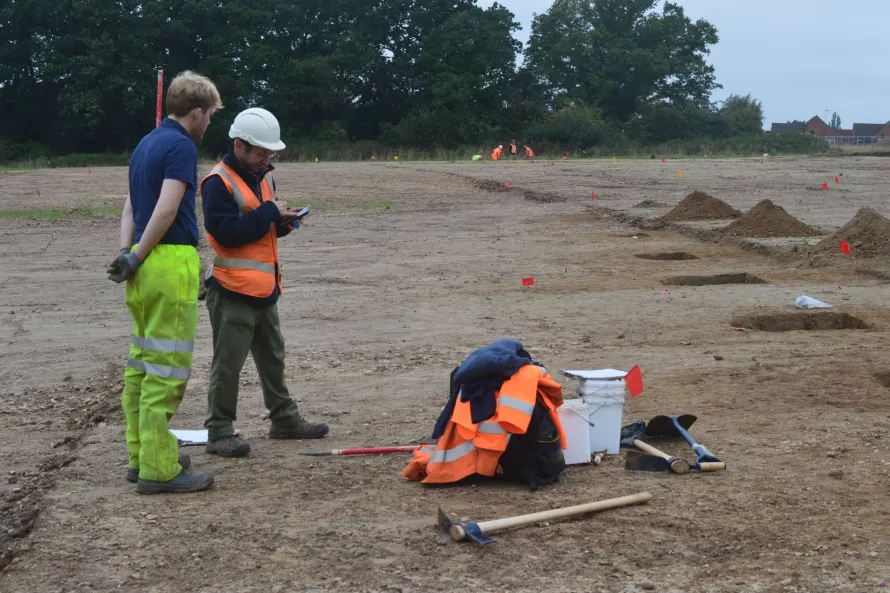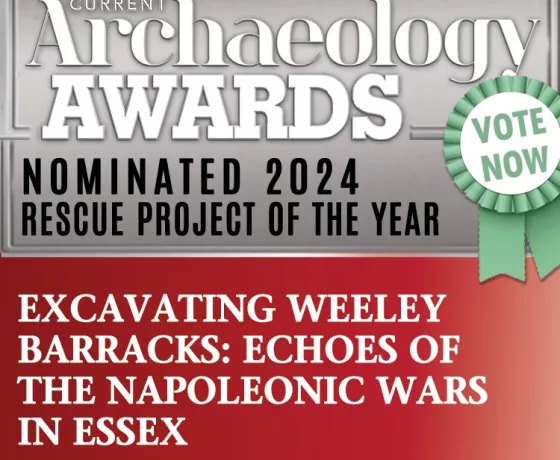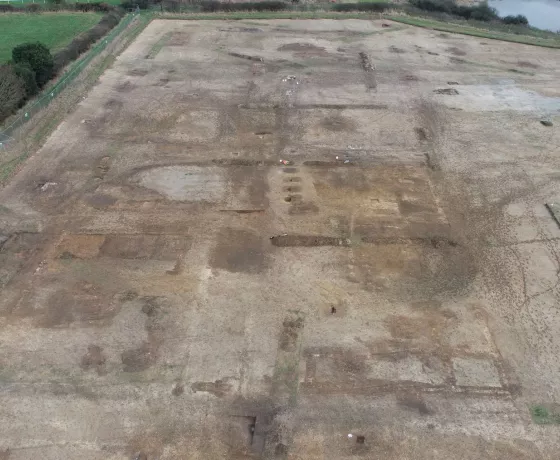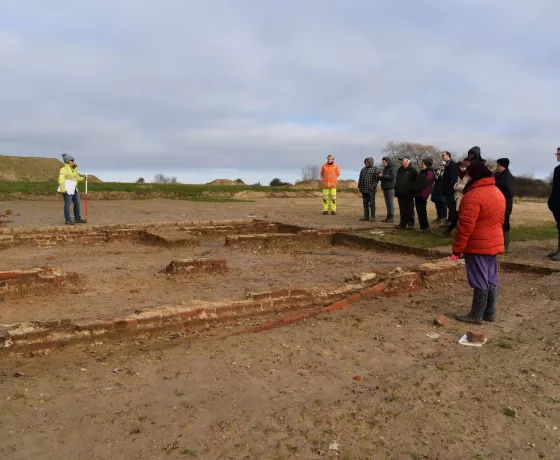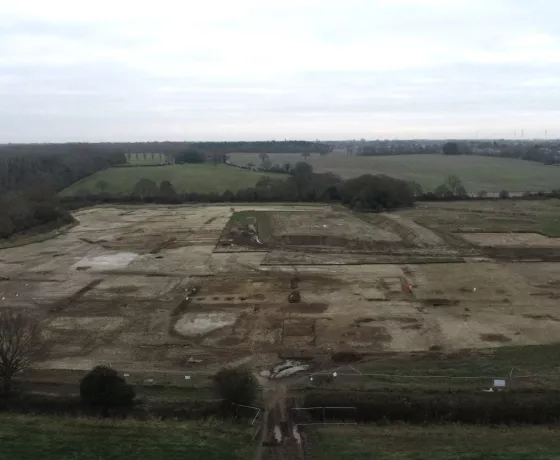The mechanical diggers have now pretty much completed removing the topsoil over the largest of the excavation areas – the one targeting the Napoleonic barracks, and there’s fair bit going on!
The most coherent structural remains are located at the bottom of the field, close to where the public footpath goes through into the wooded area. Here we have a rather nice brick building which the team from Operation Nightingale started uncovering for us (see our week 6 update). Down on this part of the site we’re on a hill – which obviously isn’t ideal for putting buildings on – so this structure has been terraced into the hillside in order to make a flat surface to build it on. What we actually have here are the foundations of the structure, rather than the structure itself.
This building is very long and thin (about 23m long and 7m wide), so it seems unlikely that the internal foundations you can see are for walls – if they are then this building would have three very long and very, very thin rooms, which would be weird! So, we think that the internal foundations are actually there to support a wooden floor. If this is the case, then this building looks quite good for being a barrack block for the soldiers: you’d get a lot of bunk beds into a long building like this!
To the east of the brick building, we’ve come across quite a few of the above rather odd sausage-shaped features. They’re in groups of about six, all sitting parallel to one another in a line and are about 4m long. We’re not entirely sure what they are yet, but the fact they have straight sides and are flat at the bottom suggests that they could be structural. If they are, then they most probably are foundation trenches for more long, thin buildings. We’ve recovered pieces of tile from the backfill, but so far, we haven’t found any brick foundations in them. This means that the foundations were either completely removed or (more likely) that the foundations were wooden. If they were made of wood we wouldn’t be able to see them anymore as they would have rotted away.
Elsewhere on site, we have found a rather fine bottle dump. This dump is not terribly old (probably post-1900) but it’s still a fine thing to see. We’ve got loads and loads of bottles, some with the names of the product on them, along with tile and quite a bit of rusty metal, including an old bucket!
Other posts in this collection
Read our latest posts about the archaeological investigations at Weeley.

